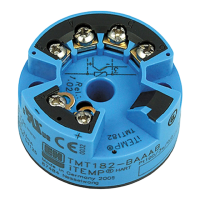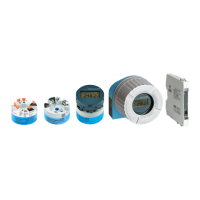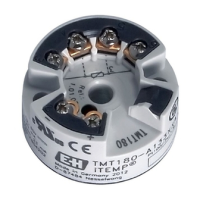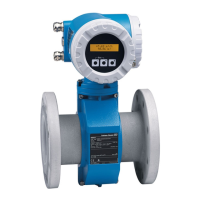Temperature transmitter iTEMP TMT82 Safety function
Endress+Hauser 11
• The "Device temperature" measured value must not be output to the primary variable
(PV) in safety-related mode.
• The "Sensor switching" and "Average with backup" functions both can not be used in
safety-related mode.
• A shielded cable that is grounded on both sides must be used if the sensor cable is
30 m (98.4 ft) or longer. The use of shielded sensor cables is generally recommended.
• Wire resistance compensation for two-wire measurement is not possible.
• If the field mount housing version with separate terminal compartment is used for
thermocouple measurement, the second channel is used for the temperature
measurement of the reference junction. (See also the operating instruction BA01028T)
• The following restriction also applies to safety-related use:
Strong, pulse-like EMC interference on the power supply line can result in transient (<
1 s) deviations in the output signal (≥ ±1%). For this reason, filtering with a time
constant of ≥ 1 s should be performed in the downstream logic unit.
The specified error range (safety measured error → 13) is sensor-specific and is
defined according to FMEDA (Failure Modes, Effects and Diagnostic Analysis) on
delivery. It already includes all influencing factors described in the Technical Information
TI (non-linearity, non-repeatability, hysteresis, zero error, temperature drift).
According to IEC / EN 61508 the safety-related failures are classified into different
categories, see the following table. The table shows the implications for the safety-
related output signal and the measurement uncertainty.
4.2.1 Safety-related failures according to IEC/EN 61508
A0034924
A High alarm ≥ 21 mA
B SIL error range ±2%
C Low alarm ≤3.6 mA
No device error
• No error
• Implications for the safety-related output signal: none
• Impact on the measurement uncertainty:
1 – Within the specification, For detailed information, see TI/BA
λS (Safe)
• Safe failure
• No impact on the safety-related output signal:
2 – Moves within the specified SIL error range
• Output signal enters the safe state
• Impact on the measurement uncertainty:
2 – Moves within the specified SIL error range
3 – Has no effect
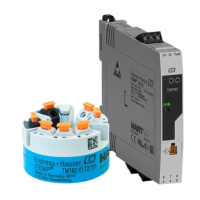
